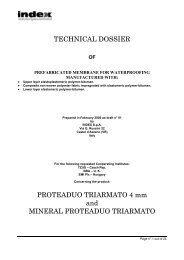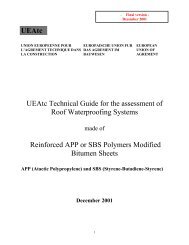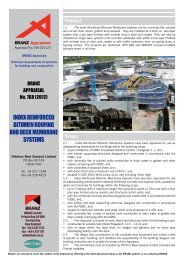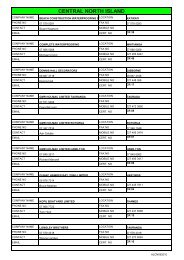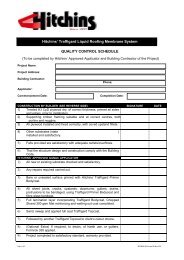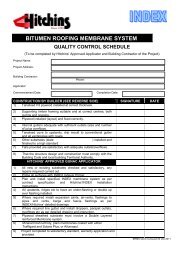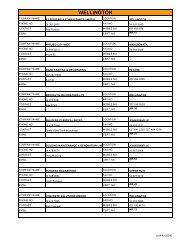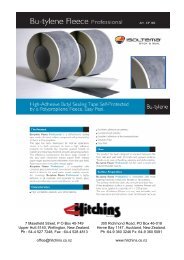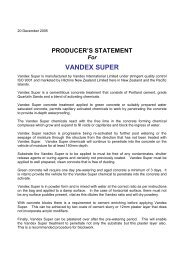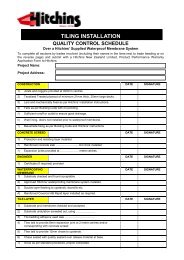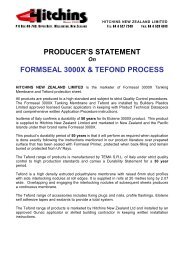VERIFICATION OF INDEX MEMBRANES FOR HITCHINS NEW ...
VERIFICATION OF INDEX MEMBRANES FOR HITCHINS NEW ...
VERIFICATION OF INDEX MEMBRANES FOR HITCHINS NEW ...
You also want an ePaper? Increase the reach of your titles
YUMPU automatically turns print PDFs into web optimized ePapers that Google loves.
10.0 OUTBREAK <strong>OF</strong> FIRE<br />
10.1 Separation or protection must be provided to the membranes and<br />
plywood substrate from heat sources such as flues and chimneys.<br />
10.2 NZBC Acceptable Solution C/AS1 Part 9 and Verification Method<br />
C/VM1 provide methods for separation and protection of combustible materials from heat<br />
sources.<br />
11.0 SPREAD <strong>OF</strong> FIRE<br />
11.1 The membranes may be used on roofs of buildings intended for all Purpose Groups,<br />
including SC and SD, subject to the requirements of NZBC Acceptable Solution C/AS1 Part<br />
7, Paragraph 7.11.1.<br />
11.2 The membranes may be used for cladding fire-rated roof construction, providing the roof<br />
construction complies with the requirements of NZBC Acceptable Solution C/AS1 Part 7.<br />
12.0 EXTERNAL MOISTURE<br />
12.1 <strong>INDEX</strong> Roofing Membranes, when installed in accordance with the Technical Literature, will<br />
provide a roof that will shed precipitated water and melted snow, and prevent the<br />
penetration of water that could cause undue dampness or damage to building elements.<br />
12.2 The membrane systems must be installed and maintained in a weatherproof state at a<br />
minimum recommended fall of 1:50. All membrane joints must be as detailed in the<br />
Technical Literature.<br />
12.3 At penetrations, the membrane must be raised to a level above that of any possible ponding<br />
that may be caused by blockage of roof drainage facilities.<br />
12.4 Side laps must be a minimum of 100mm and end laps must be a minimum of 150mm. All<br />
laps joints must be torch sealed and staggered.<br />
12.5 Provisions for Snow<br />
Specific weather tightness design for preventing the ingress of snow melt water is required<br />
in accordance with the requirements of NZBC Acceptable Solution E2/AS1 February 2005<br />
Paragraph 1.3.<br />
13.0. INTERNAL MOISTURE<br />
13.1 The impermeability of the membranes requires that consideration must be given to the<br />
effective control of moisture in the roof structure, and closed-in construction spaces under<br />
the membrane must have adequate ventilation to prevent the accumulation of moisture<br />
venting and vapour barrier requirements will depend on the level of moisture that is present<br />
in the construction at the time of the installation, the value of the ceiling/roof construction,<br />
and the type of occupancy.<br />
Joyce Group Limited<br />
Page 12



